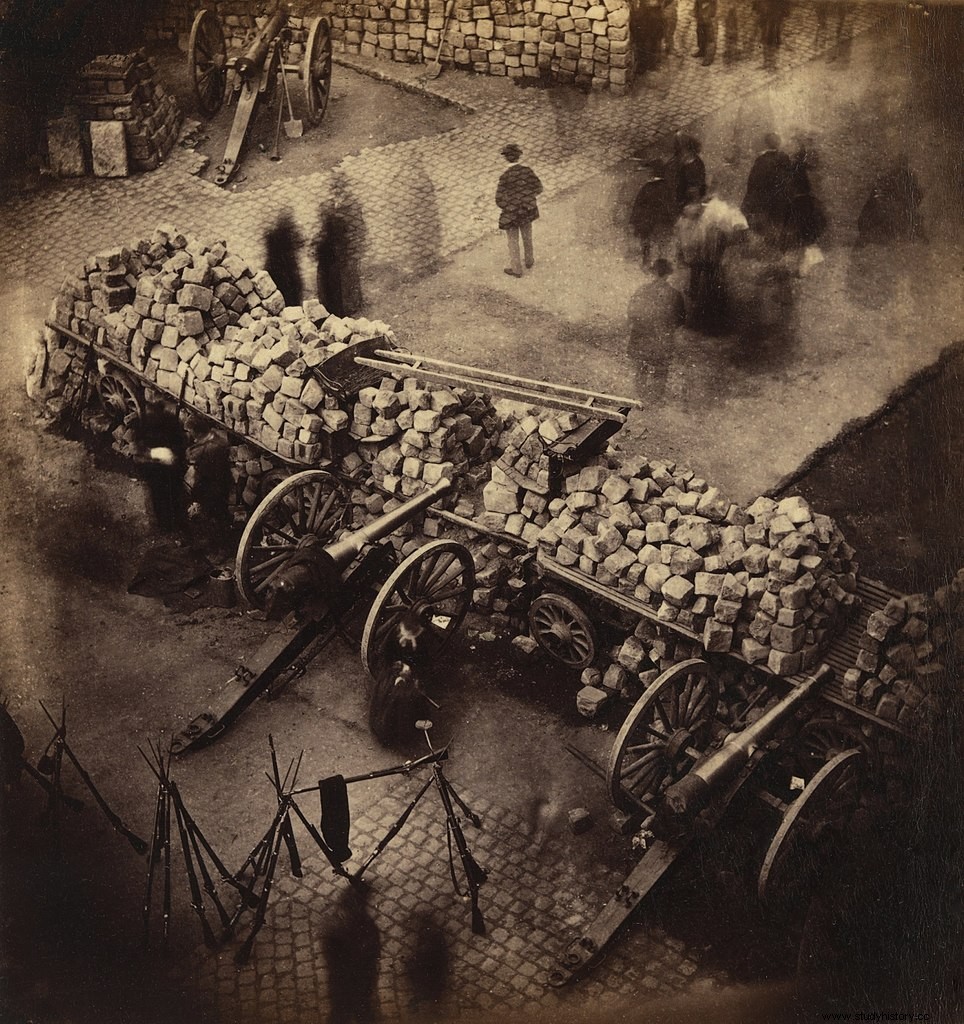After the chaos of the Terror, the political instability oscillating between the Directory, the Empire, the Restoration, the July Revolution, the July Monarchy, the February Revolution of 1848 and the II th Republic (1848-1851), France finally experienced, with the advent of the Second Empire (1852-1870) established by a coup led by Louis Napoleon 1 st on December 2, 1851, a period of relative stability. But the war, declared a little too quickly by France to the Prussians, on July 19, 1870, put an end to hopes. The country is all the more ill-prepared as the emperor thought he would receive the support of his allies. Six months later, on September 2, 1870, Emperor Napoleon III capitulated in Sedan. The furious people bring down the Empire and on September 4 proclaim the III th Republic. Paris finds itself besieged by the Prussians.
May 21-28, 1871

Characters
Louis-Auguste Blanqui
Jacques-Leonard Clement-Thomas
Gustave Courbet
Georges Darboy
Charles Delescluze
Jaroslaw Dombrowksi
Claude Martin Lecomte
Louise Michel
Napoleon III
Patrice de Mac Mahon
Pierre-Joseph Proudhon
Louis Rossel
Adolphe Thiers
Edouard Vaillant
Procedure
Elections are held to form a government. The Assembly elected on February 8, 1871 has its headquarters in Bordeaux; she is rather a monarchist and therefore is not much liked by the workers… The President of the government is Adolphe Thiers. In Paris, the people who suffer the privations of the famine rise up. Riots broke out on the Butte Montmartre on March 18, 1871, because the government wanted to recover the stored guns. Two generals among the soldiers died during the insurrection, Thiers arrested Auguste Blanqui, who was one of the leaders of the social revolt, and fled to Versailles. This is the beginning of the Commune which is self-managed, like a State within the State.
From then on, the revolutionaries, the "Communards", such as Delescluze, Vaillant, Dombrowksi, Rossel and Proudhon erected barricades, organized elections in haste, and created a transitional workers' government. The Commune sits until May 20, 1871 and begins major reforms. Thiers then asked the Prussians to put soldiers prisoners at his disposal to put down the insurrection. From then on, on May 21, the Versailles troops (also composed of liberated soldiers), led by Marshal Mac Mahon, arrived by the Point du Jour district located in Boulogne-Billancourt. A formerly pro-Commune man, Ducatel, helps them through the gates. The troops fire on the Communards. It's the start of Bloody Week.
Provost courts (extraordinary courts headed by a military judge appointed provost) are set up to carry out summary executions. From then on, the Communards, also called the Federates, responded by also shooting, thus killing Archbishop Darboy, under the pretext of the "hostage decree" which authorized the imprisonment and killing of the enemies of the people. They put Paris on fire and bloodshed by setting off fires, accentuated by the bombardments of the Prussians. The Hôtel de Ville, the Palais de Justice, that of the Tuileries or the Palais d'Orsay, are set ablaze.
After 7 days of fierce fighting, the rebellion is suppressed. The Bloody Week, which expires on May 28 at the Père Lachaise cemetery, will kill around 20,000 people. Many deportations will follow (like Louise Michel, one of the most famous women who participated in the Commune) as well as court proceedings (thus the painter Gustave Courbet is condemned for having unbolted the Vendôme column).
Consequences
The Commune is considered the first insurrectionary movement of proletarian origin. The Left will often take it as a reference because this episode now makes the workers' revolution possible; it will long remain the benchmark for many revolutions to come (October 1917, etc.).
